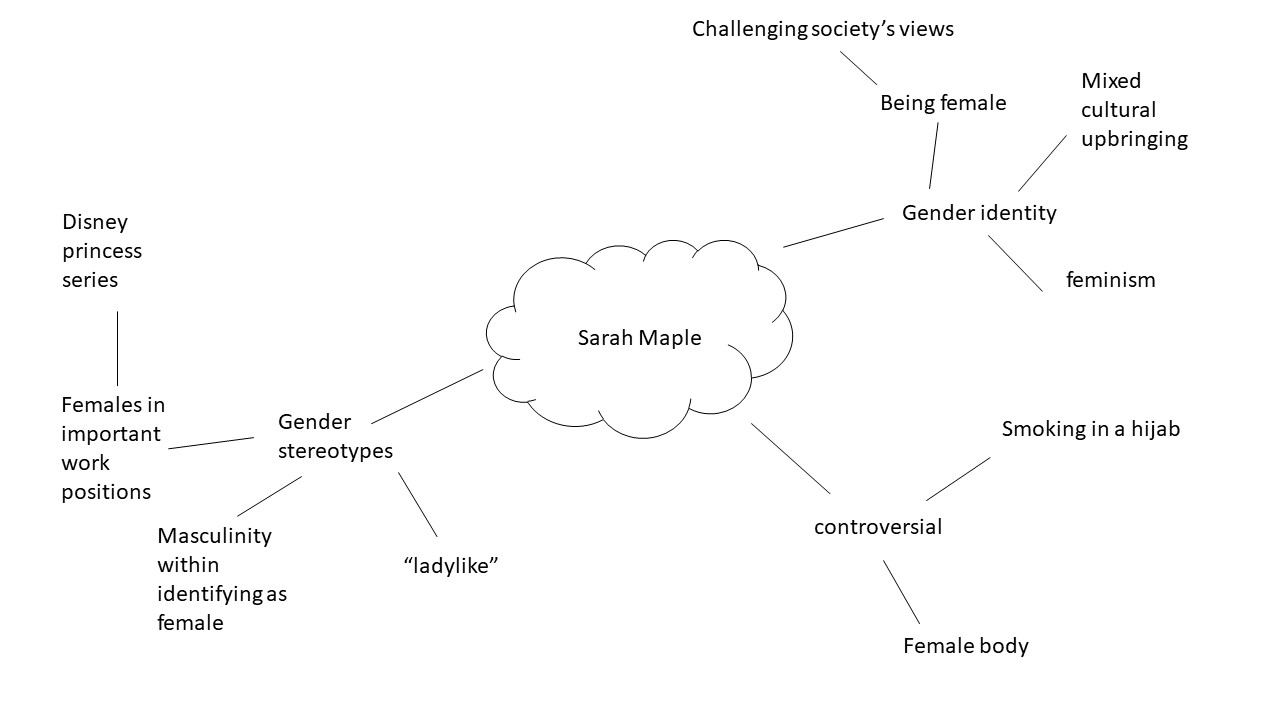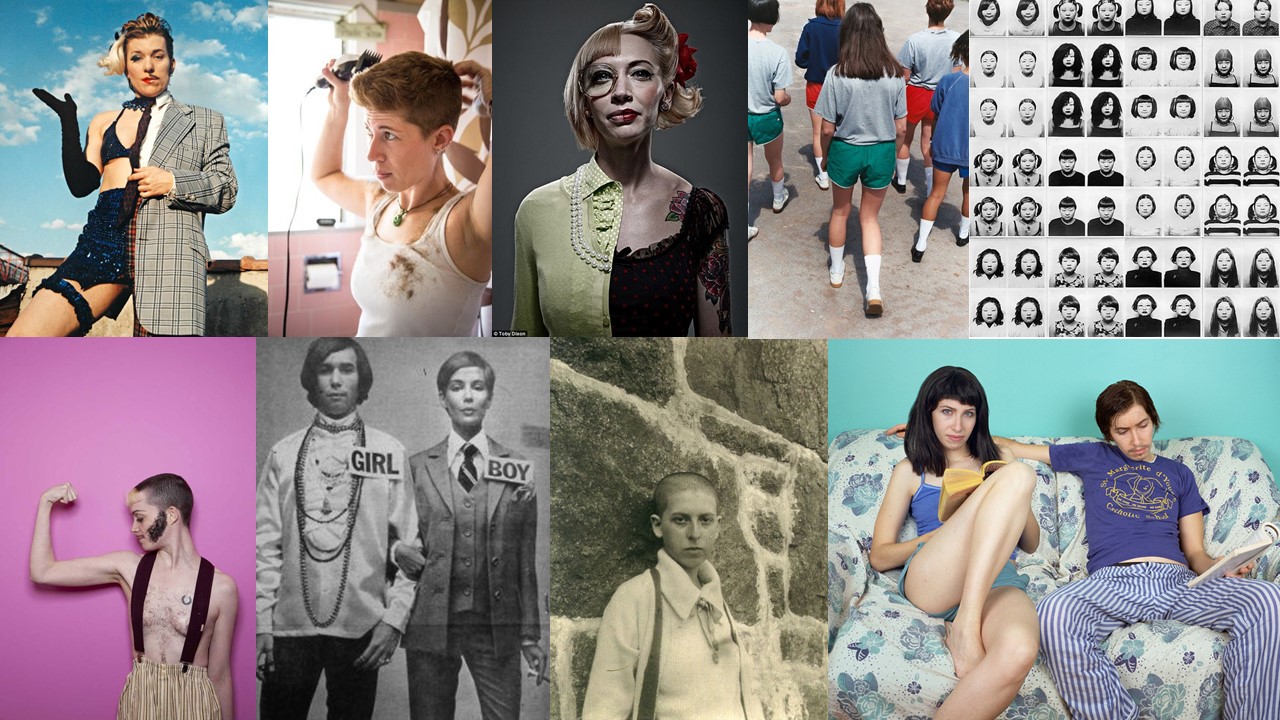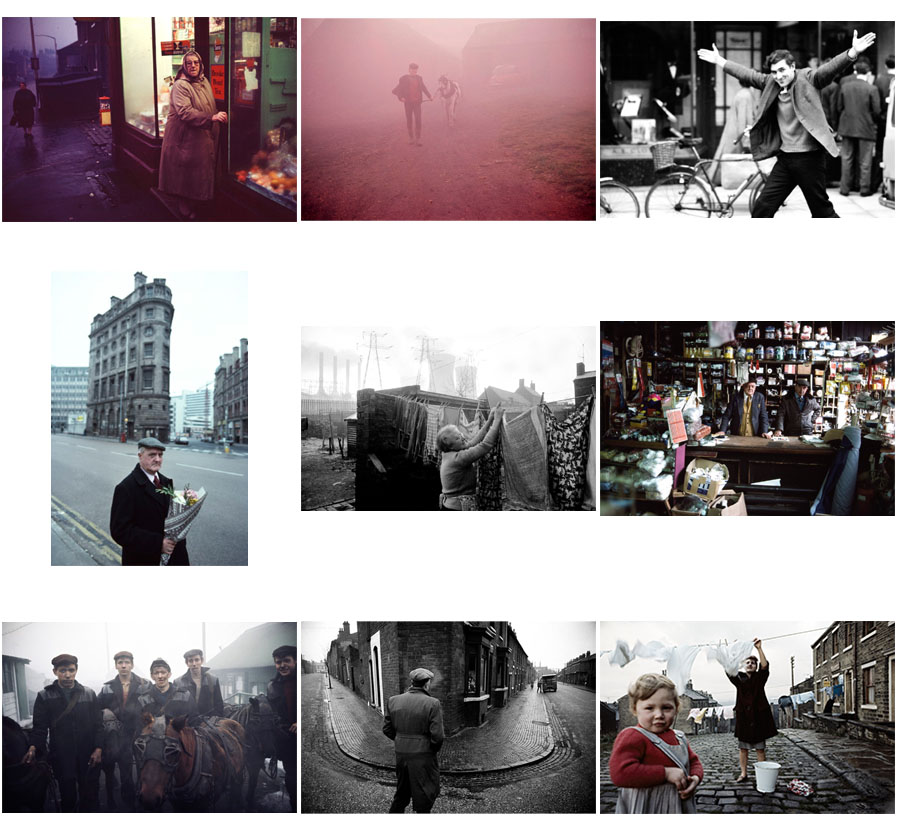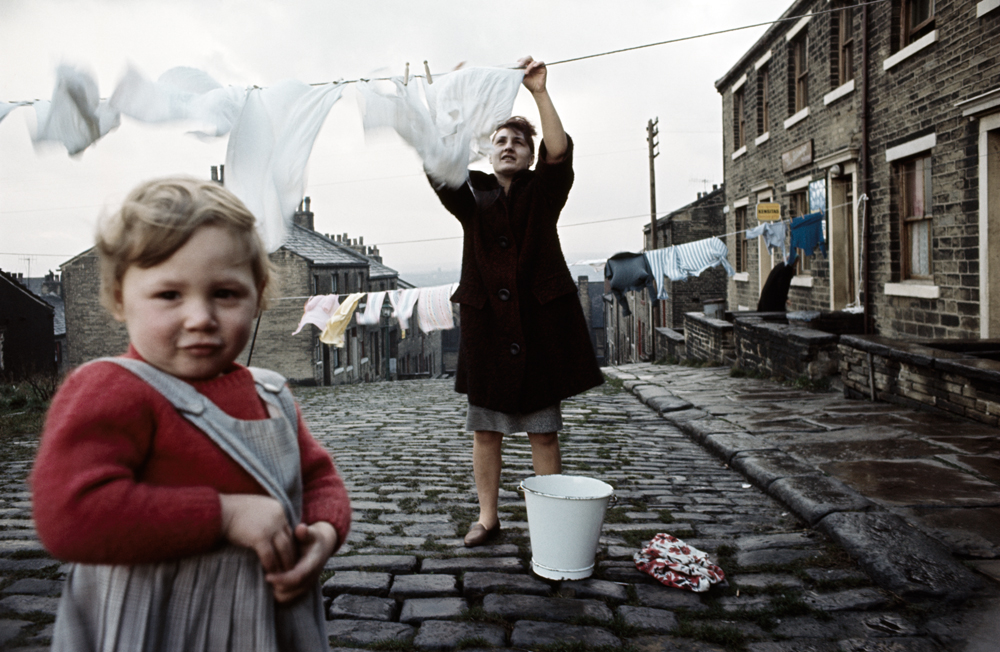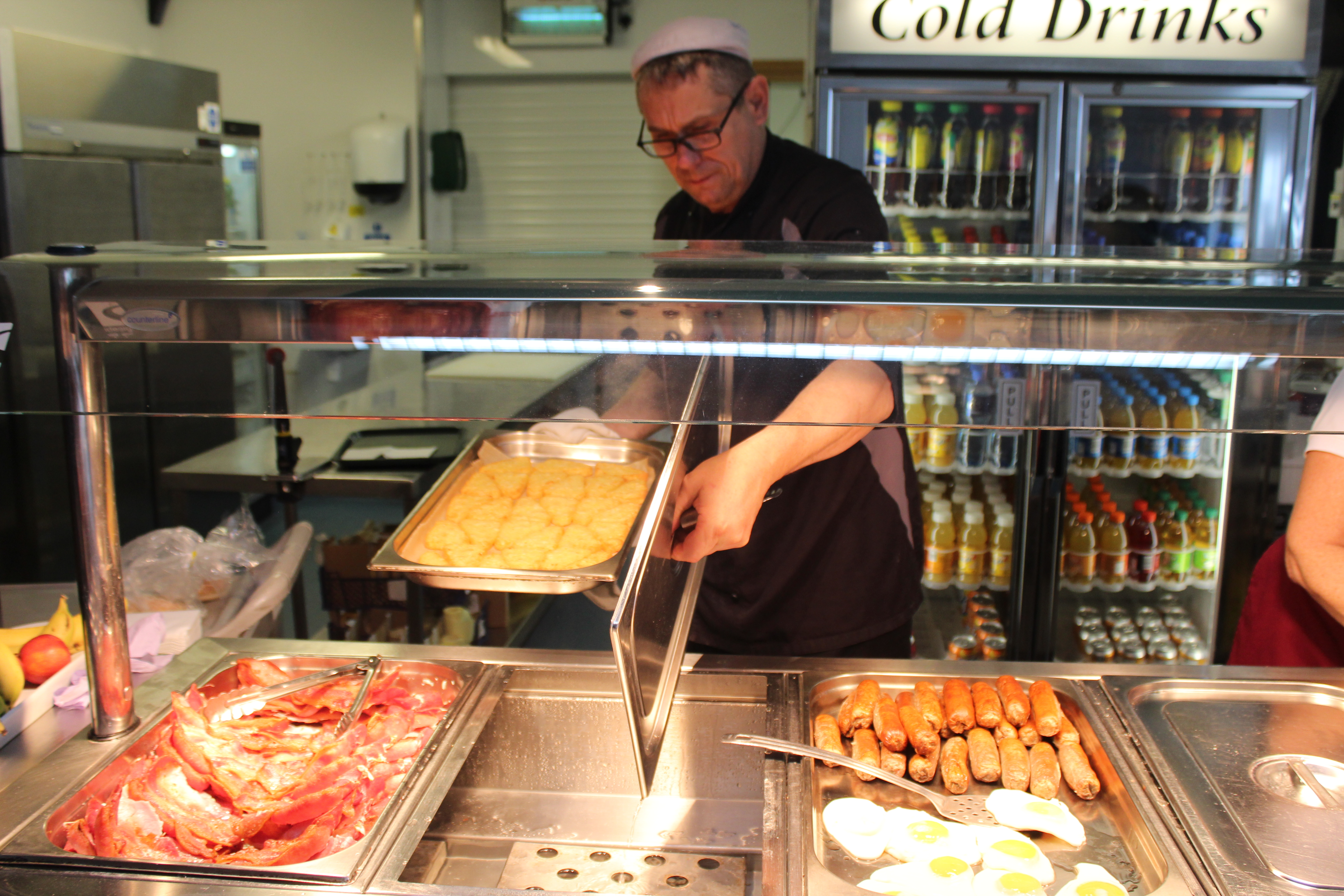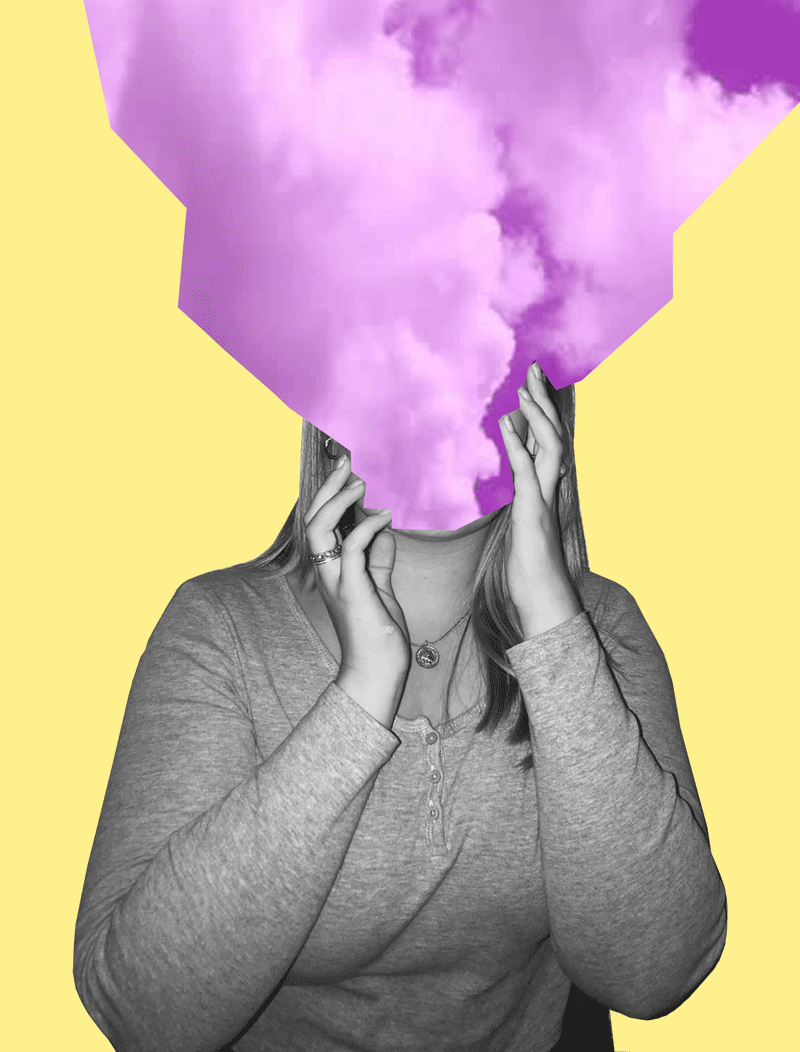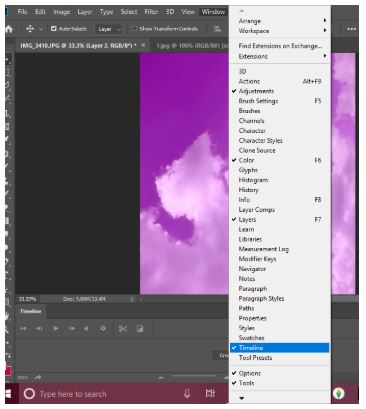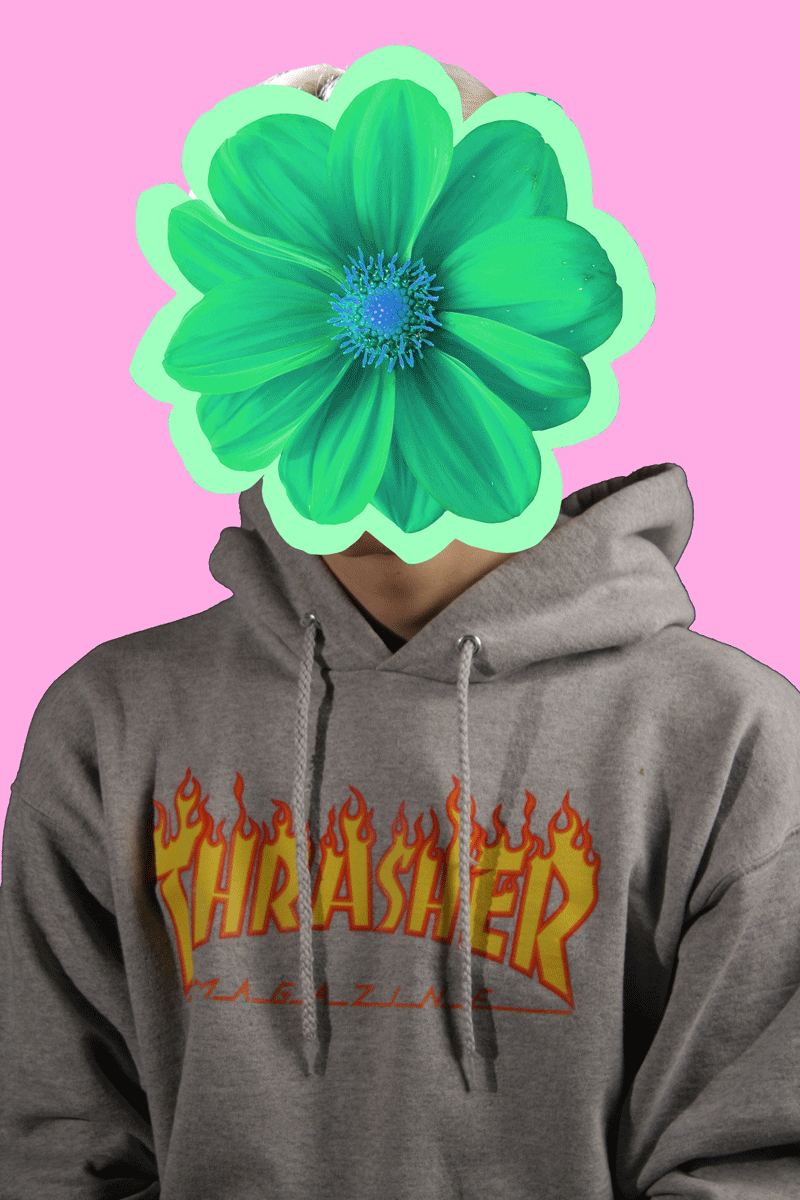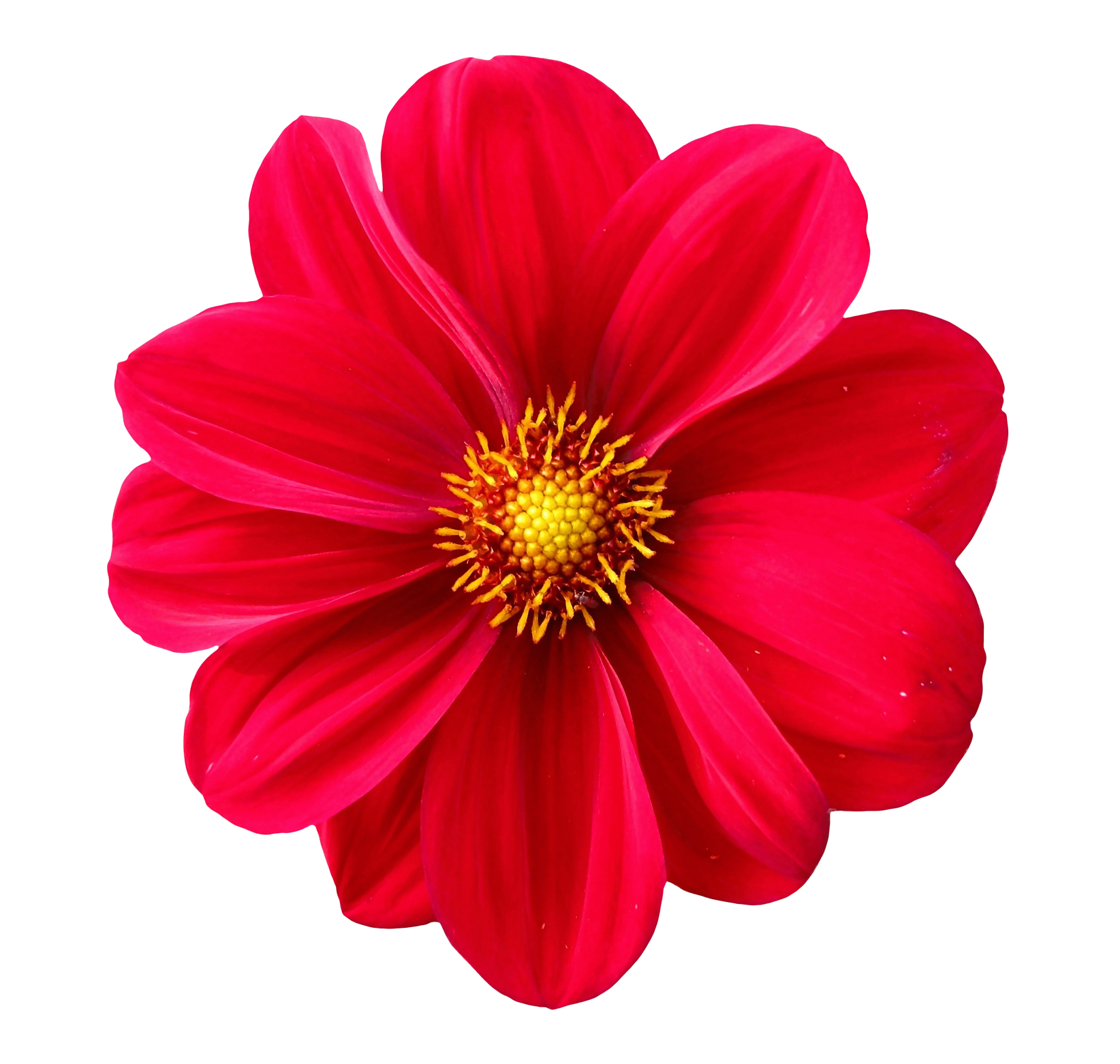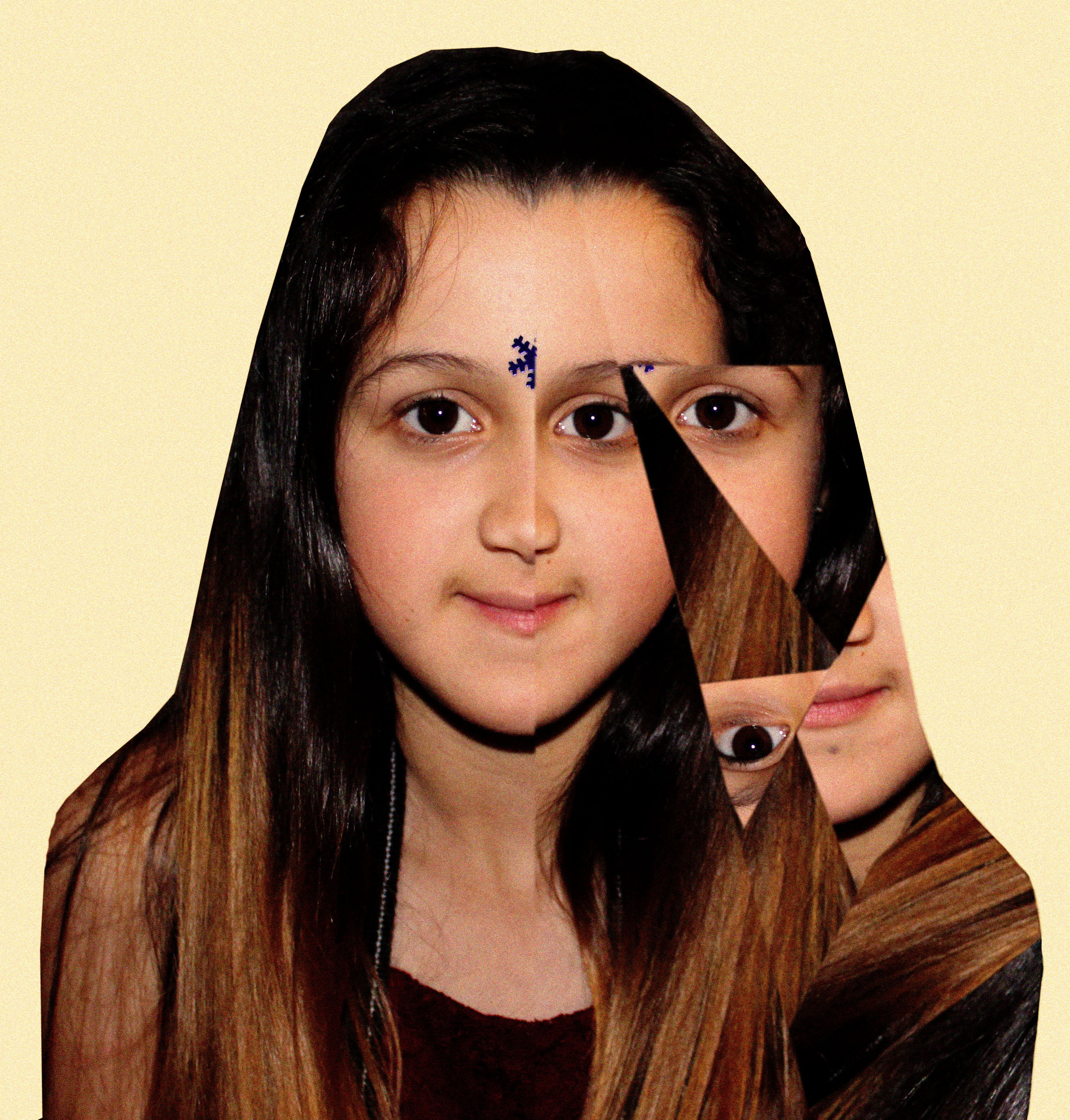Sarah Maple was born in 1985 to an Iranian Muslim mother, and a Christian father. Most of her work stems from her mixed cultural upbringing, and challenges the traditional social role of women, and also concepts of religion. Some of Maple’s work can be viewed as controversial as she’s pictured herself doing things such as smoking in a hijab.
Mood board
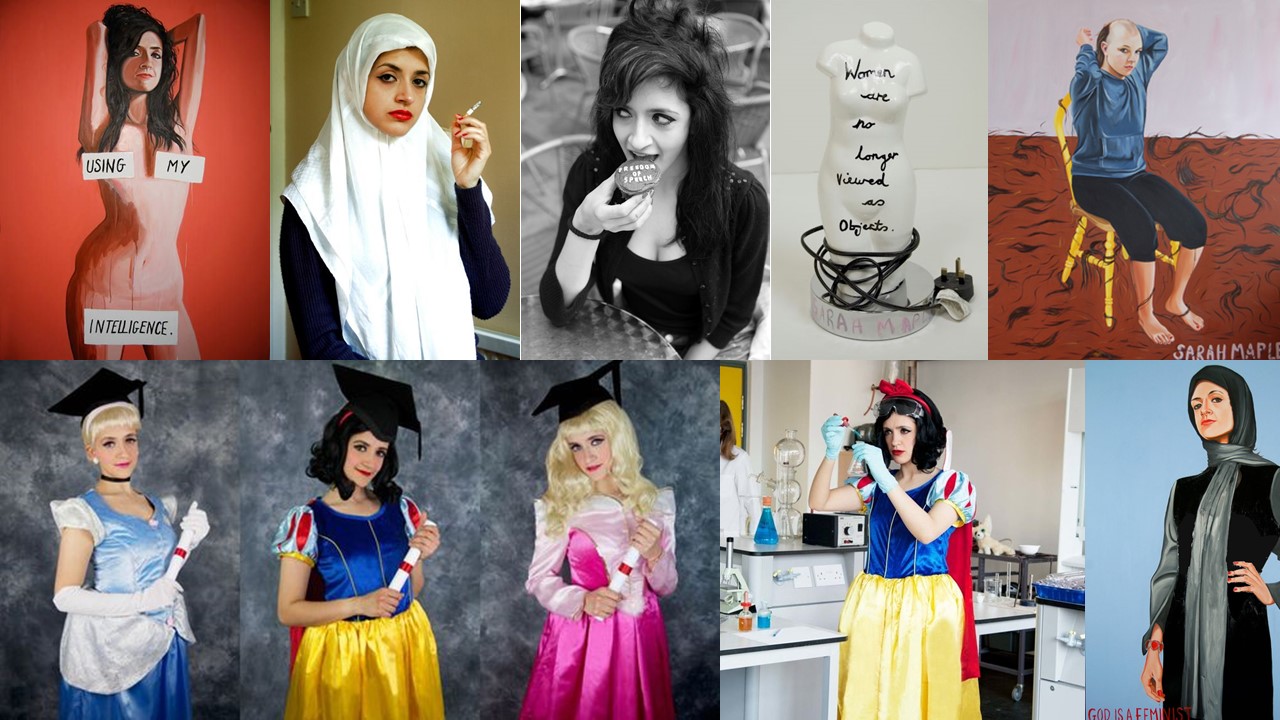
Mind Map
Analysing

Context
This is an image from Sarah Maple’s Disney Princess series.
Visual
In this image we see 3 people in what seems to be a scientific lab setting. ” of the people are in the background and the third person is in the centre of the frame dressed as snow white while handling a beaker.
Concept
I think this image is very powerful in breaking gender stereotype perceptions. This image shows a Disney princess in what could be considered a very professional and respected job role. By having a stereotypical female, who’s wearing a dress, and makeup taking on the role of a princess Maple is trying to convey the fact that females are fully able to be in respected job roles.
Analysing
 Context
Context
This is a mixed media art piece, Created by Maple then photographed by her.
Visual
This image shows a white lampshade in the shape of a female body, with the message “women are no longer viewed as objects” written on it in a black pen.
Concept
This image is very powerful in conveying Maple’s opinion on the female body. Although the message written on the lampshade says that women are no longer viewed as objects, this image suggests that she doesn’t think that’s true. This is due to the fact that the message is literally written on a lampshade, which is an object, in the shape of a female body. I think this is a very interesting image as the artist has contradicted herself in order to gained the viewers attention, in order for them to understand the concept of the sculpture.

